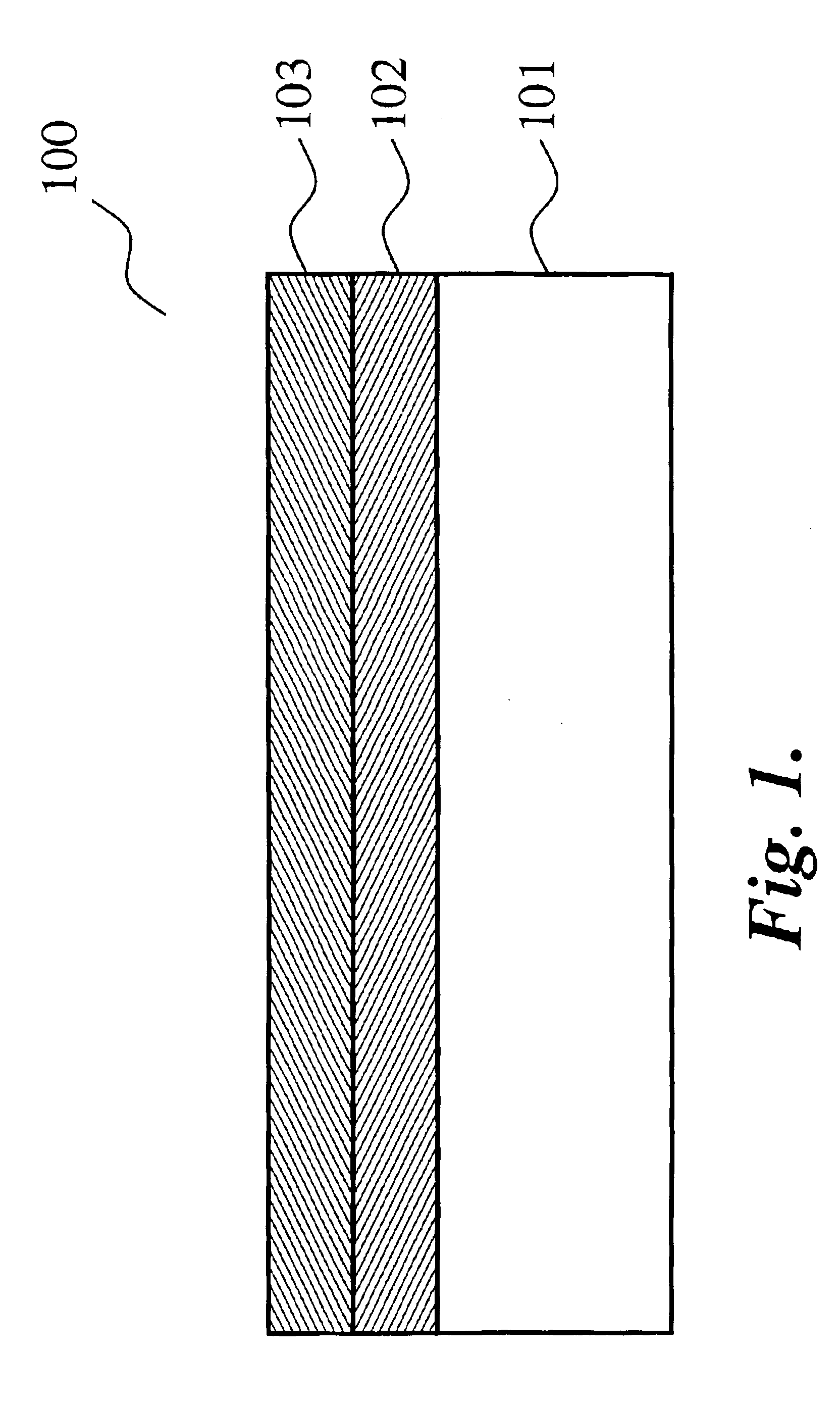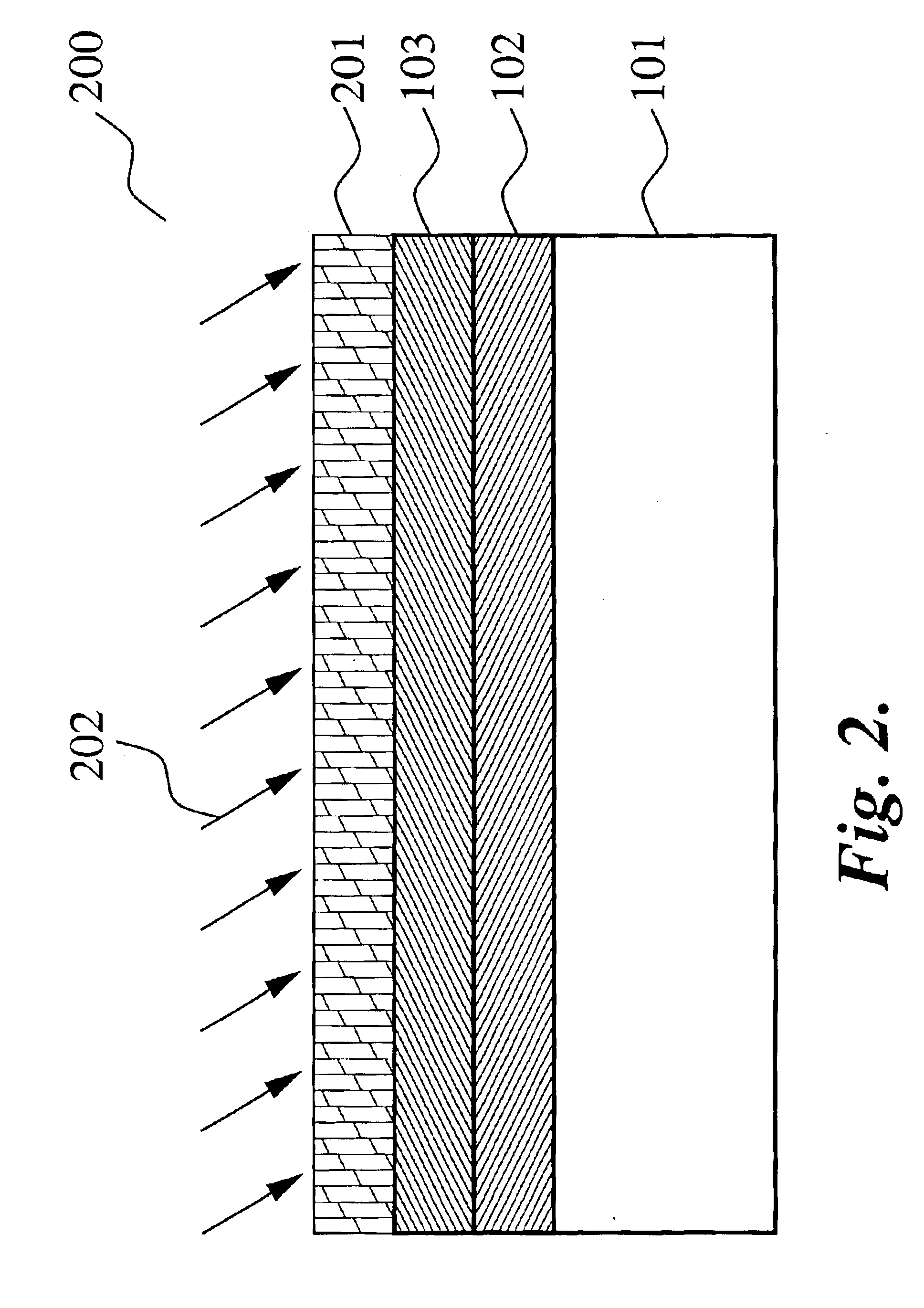Method for forming carbon nanotubes with intermediate purification steps
a carbon nanotube and purification step technology, applied in the direction of crystal growth process, polycrystalline material growth, chemically reactive gas growth, etc., can solve the problems of unfavorable forming of nanotubes, and requiring a complicated post-treatment or purification procedur
- Summary
- Abstract
- Description
- Claims
- Application Information
AI Technical Summary
Benefits of technology
Problems solved by technology
Method used
Image
Examples
exemplary embodiment 100
Reference will now be made to FIG. 1, which illustrates a cross-sectional view of an exemplary embodiment 100 of a substrate for use in the formation of carbon nanotubes according to the inventive concept. To facilitate the formation of the carbon nanotubes thereon, the upper surface of the substrate 101 can be coated with a catalytic metal layer 103 of a predetermined thickness, as shown in FIG. 1. For example, this catalytic layer 103 may comprise one of the transition group metals, including, without limitation, nickel, cobalt and iron. Alternatively, the catalytic material 103 can comprise an alloy of one or more such metals. Various methods for coating substrate with catalytic layers of predetermined thickness are well known to persons of skill in the art. One such widely used method is a sputtering deposition process. The thickness of the catalytic layer 103 may vary in the range between 1 nm and 100 nm.
In an alternative embodiment of the invention an additional buffer 102 lay...
exemplary embodiment 200
FIG. 2 illustrates a cross-sectional view of an exemplary embodiment 200 of a substrate during the growth stage of the inventive carbon nanotubes formation process. In that figure, numeral 202 designates deposition plasma produced by a plasma source, while numeral 201 designates the newly grown nanotube layer. To facilitate the growth process, the substrate 100 and the ambient gas in the plasma process chamber may be heated to a temperature in the range between 400° C. and 600° C. In one embodiment of the present invention, the plasma density to grow the carbon nanotubes is in the range of 1010 to 1012 / cm3. In one embodiment of the invention, an inductively coupled plasma or microwave plasma chamber capable of generating a high-density plasma is used in the nanotube growing process. The source gas for the plasma deposition 202 may be a hydrocarbon containing gas, having a hydrogen-containing gas as additive. The presence of the additive gas in the plasma process chamber facilitates ...
exemplary embodiment 300
After the nanotubes have been grown in the described manner, the purification step is performed on the newly formed nanotube structures. Specifically, the purification process removes graphite and other carbon particles from the walls of the grown carbon nanotubes and controls the physical dimension or physical characteristics of the carbon nanotubes. FIG. 3 illustrates a cross-sectional view of an exemplary embodiment 300 of a substrate during the purification stage of the inventive carbon nanotubes formation process. In that figure, numeral 301 designates purification plasma produced by a plasma source. In one embodiment of the invention, the purification is performed with the plasma 301 at the same substrate temperature. For the purification process, the additive hydrogen containing gas is used as plasma source gas.
PUM
| Property | Measurement | Unit |
|---|---|---|
| temperature | aaaaa | aaaaa |
| temperature | aaaaa | aaaaa |
| pressure | aaaaa | aaaaa |
Abstract
Description
Claims
Application Information
 Login to View More
Login to View More - R&D
- Intellectual Property
- Life Sciences
- Materials
- Tech Scout
- Unparalleled Data Quality
- Higher Quality Content
- 60% Fewer Hallucinations
Browse by: Latest US Patents, China's latest patents, Technical Efficacy Thesaurus, Application Domain, Technology Topic, Popular Technical Reports.
© 2025 PatSnap. All rights reserved.Legal|Privacy policy|Modern Slavery Act Transparency Statement|Sitemap|About US| Contact US: help@patsnap.com



